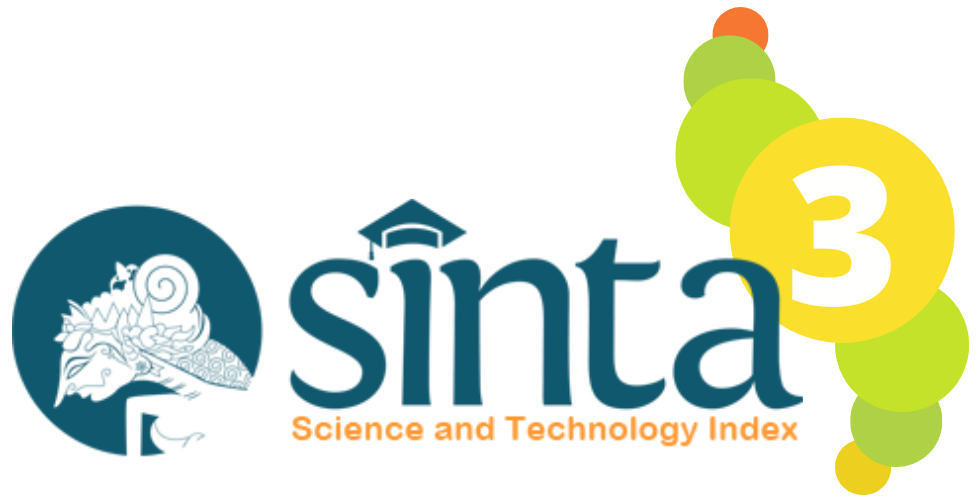UPAYA MENINGKATAKAN KEAKTIFAN DAN HASIL BELAJAR IPS MELALUI PROBLEM BASED LEARNING
DOI:
https://doi.org/10.32585/dikdasbantara.v4i2.1684Keywords:
Keaktifan, hasil belajar IPS, problem based learning, powerpointAbstract
Penelitian ini bertujuan untuk meningkatkan keaktifan dan hasil belajar siswa kelas IV SD Negeri Kenokorejo 01 pada muatan pelajaran IPS dengan menggunakan model pembelajaran Problem Based Learning dengan media powerpoint. Penelitian Tindakan Kelas ini terdiri dari empat tahap yaitu perencanaan, pelaksanaan, pengamatan dan refleksi. Teknik pengumpulan data dengan teknik observasi, wawancara, dokumentasi, dan tes. sedangkan teknik analisis data melalui tiga tahapan yaitu reduksi, penyajian data, dan kesimpulan. Hasil penelitian menunjukkan adanya peningkatan keaktifan dan hasil belajar siswa kelas IV SD Negeri Kenokorejo 01. Peningkatannya sebagai berikut: pada pra siklus mengajukkan pertanyaan 3 siswa atau 30%, menjawab pertanyaan 3 siswa atau 30%, mengemukakan pendapat 2 siswa atau 20%, dan hasil belajar 3 siswa atau 30% pada siklus I mengajukkan pertanyaan 5 siswa atau 50%, menjawab pertanyaan 6 siswa atau 60%, mengemukakan pendapat 5 siswa atau 50%, dan hasil belajar 6 siswa atau 60% sedangkan pada siklus II mengajukkan pertanyaan 8 siswa atau 80%, menjawab pertanyaan 9 siswa atau 90%, mengemukakan pendapat 8 siswa atau 80%, dan hasil belajar 9 siswa atau 90%. Penelitian ini dapat disimpulkan melalui penerapan model pembelajaran Problem Based Learning dengan media powerpoint dapat meningkatkan keaktifan dan hasil belajar siswa kelas IV SD Negeri Kenokorejo 01 tahun 2020/2021.
Downloads
References
Anugraheni, Indri. 2018. Meta Analisis Model Pembelajaran Problem Based Learning dalam Meningkatkan Keterampilan Berpikir Kritis di Sekolah Dasar. A Journal of Language, Literature, Culture, and Education, 14 (1)
Arikunto, Suharsimi. 2006. Prosedur Penelitian Suatu Pendekatan Praktik. Jakarta: PT Rineka Cipta
Arikunto, Suharsimi, Suhardjono dan Supardi. 2007. Penelitian Tindakan Kelas. 1. Jakarta: Bumi Aksara
Doly, Marah. 2015. Penerapan Strategi Instant Assessment untuk Meningkatkan Keaktifan Belajar Matematika Siswa SMP Al Hidayah Medan T.P 2013/2014. Jurnal Edu Tech,1(1). 1-16
Fauziah, Delia Nurul. 2016. Penerapan Model Problem Based Learning untuk Meningkatkan hasil Belajar Siswa pada Pembelajaran IPS di Sekolah Dasar. Jurnla Pendidikan Guru Sekolah dasar. 1(1). 103-109
Hamalik, Oemar. 2007. Dasar-Dasar Pengembangan Kurikulum. 1. Bandung: PT Remaja Rosdakarya
Iskandar. 2009. Metodologi penelitian Pendidikan. Jakarta: Rineka Cipta
Khaerunnisa, F, Sunarjan, YYFR, dan Atmaja, HT. 2018. Pengaruh penggunaan Power Point Terhadap Minat Sejarah Kelas X SMA Negeri 1 Bumiayu Tahun Ajaran 2017/2018. Indonesian Journal of History Education. 6 (1). 31-41
Maryatun. 2015. Pengaruh Penggunaan Media Program Microsoft Power Point Terhadap hasil Belajar Strategi Promosi Pemasaran Mahasiswa Semester 2 Program Studi Pendidikan Ekonomi Universitas Muhammadiyah Metro Tahun Ajaran 2014/2015. Journal Pendidikan Ekonomi UM. 3(1). 1-14
Shoimin, Aris. 2017. 68 Model Pembelajaran Inovatif dalam Kurikulum 2013. Yogyakarta: Ar-Ruzz Media
Sugiyono. 2012. Metode Penelitian Kombinasi (Mixed Menthods). 1. Bandung: Alfabeta
Suwandi, Yulis. 2015. Peningkatan Hasil Belajar IPA Tentang Ekosistem Melalui Metode Problem Based Learning Pada Siswa Kelas V SD KabupatenTanaTidung. Jurnal Pendidikan Dasar. 6(1). 93-102
Uno, Hamzah B dan Lamatenggo, N. 2010. Teknologi Komunikasi & Informasi Pembelajaran. 1. Jakarta: Bumi Aksara
Downloads
Published
Issue
Section
License
The copyright to this article is transferred to Jurnal Dikdas Bantara if and when the article is accepted for publication under Creative Commons Attribution-ShareAlike 4.0 International License. The undersigned hereby transfers any and all rights in and to the paper including without limitation all copyrights to Jurnal Dikdas Bantara. The undersigned hereby represents and warrants that the paper is original and that he/she is the author of the paper, except for material that is clearly identified as to its original source, with permission notices from the copyright owners where required. The undersigned represents that he/she has the power and authority to make and execute this assignment.We declare that:
1. This paper has not been published in the same form elsewhere.
2. It will not be submitted anywhere else for publication prior to acceptance/rejection by this Journal.
3. A copyright permission is obtained for materials published elsewhere and which require this permission for reproduction.
Furthermore, I/We hereby transfer the unlimited rights of publication of the above-mentioned paper in whole to Jurnal Dikdas Bantara. The copyright transfer covers the right to reproduce and distribute the article, including reprints, translations, photographic reproductions, microform, electronic form (offline, online), or any other reproductions of similar nature. The corresponding author signs for and accepts responsibility for releasing this material on behalf of any and all co-authors. After submission of this agreement signed by the corresponding author, changes of authorship or in the order of the authors listed will not be accepted.
Retained Rights/Terms and Conditions
1. Authors retain all proprietary rights in any process, procedure, or article of manufacture described in the work.
2. Authors may reproduce or authorize others to reproduce the work or derivative works for the author’s personal use or for company use, provided that the source and the Jurnal Dikdas Bantara copyright notice are indicated, the copies are not used in any way that implies Jurnal Dikdas Bantara endorsement of a product or service of any employer, and the copies themselves are not offered for sale.
3. Although authors are permitted to re-use all or portions of the work in other works, this does not include granting third-party requests for reprinting, republishing, or other types of re-use.



















